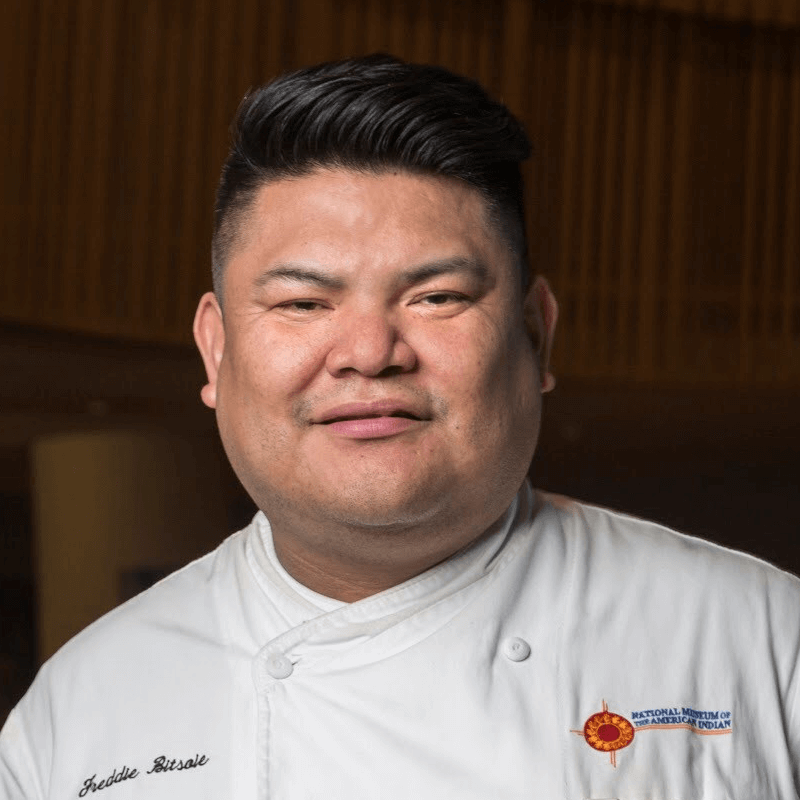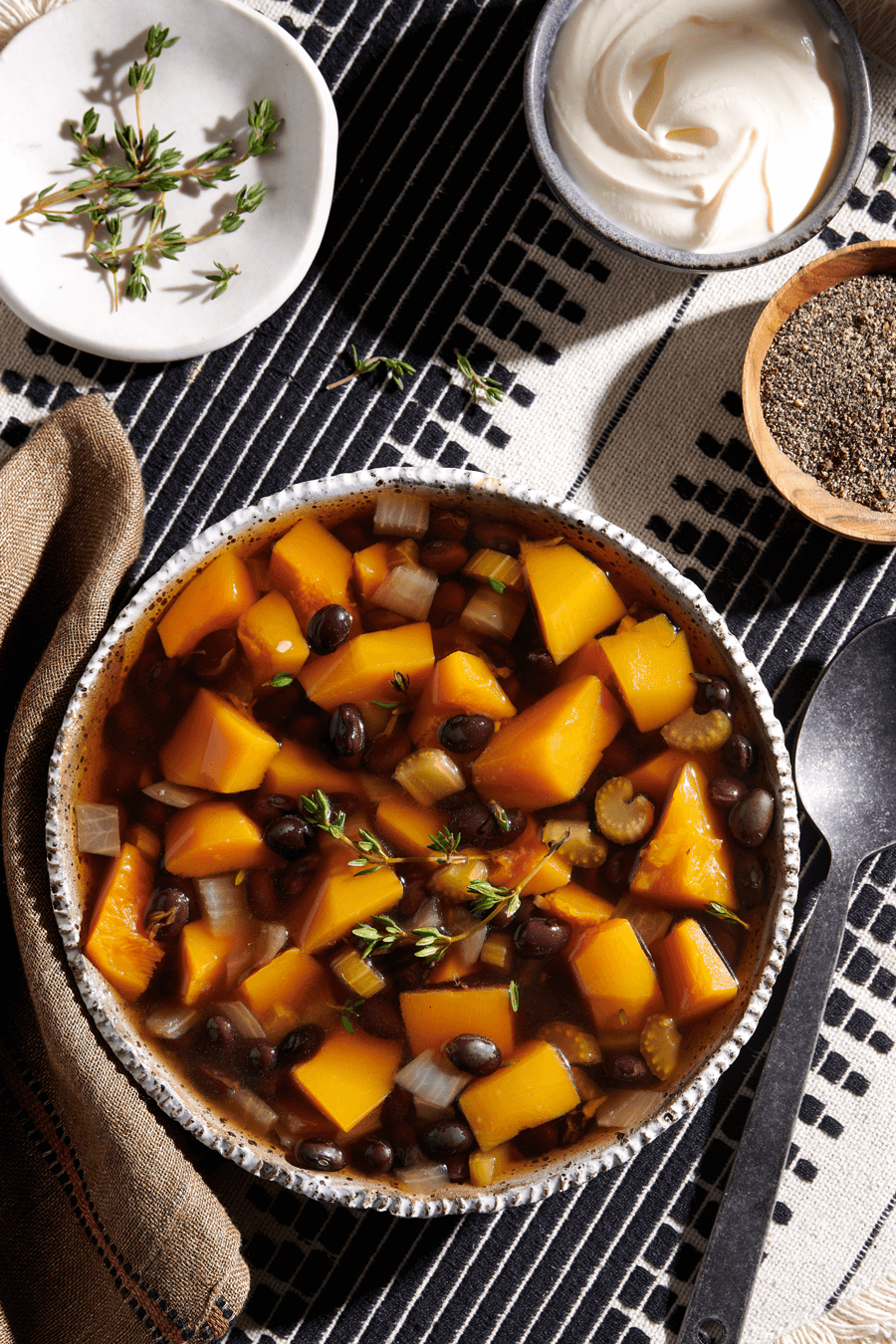
One of the country’s leading chefs specializing in Native American cuisine and a member of the Navajo Nation, Chef Freddie Bitsoie has a passion for teaching people about the techniques and ingredients that are indigenous to North America. He served as executive chef at Mitsitam Native Foods Café at the Smithsonian’s National Museum of the American Indian, and he recently published a cookbook, New Native Kitchen. A celebration of indigenous cuisine, the book features modern interpretations of 100 recipes that have long fed this country.
 Gourd and Bean Soup
Gourd and Bean SoupQ: How would you define the recipes featured in your book New Native Kitchen? How do these recipes differ from those that may be considered traditional Native American recipes?
The recipes that I created for New Native Kitchen were from recipes that I developed when I was the chef at the Smithsonian’s National Museum of the American Indian. The cafe was also an exhibition of the museum itself, therefore I had to look at where Native American food was, where Native American food is today and where Native American food will be tomorrow. It’s difficult to label dishes as “traditional” or “authentic” on menus because the terms are very subjective. Everyone believes that no one can compete with their grandma’s or aunt’s food. I had that conversation many times when I worked at the museum.
Q: How has your background in anthropology aided in your cooking and the writing of your book?
Growing up, I lived in almost every town on Interstate 40 from Albuquerque, NM, to the California/Arizona border. I saw how people are different, no matter how close they live. Seeing those differences was what made me understand how we interact and how we feed each other. I majored in Anthropology because I understood it immediately.
I credit Professor David Stuart at the University of New Mexico with sparking my interest in food. He suggested that I look into historical culinary culture. He wanted me to see if 800 to 1,000 years ago there were a couple of jerks saying, “The food I cook is so much better than yours.” We tend to think of historic cultures as just walking up to a bush and eating the berries or hunting a deer and roasting it over an open fire right then and there. Professor Stuart helped me with the idea that people many years ago cared about what they ate, which I believe.
Q: How did you make the shift to focusing on Native American foods?
After university I entered culinary school and then found an externship at a JW Marriott in north Phoenix. I started to see flyers and ads about “Native American Cuisine.” With anthropology as my background, I felt I had to look into this. I didn’t understand it. How do we view the food? How do we categorize? There are more than 530 Native American tribes in the United States. How is it possible for us to put that many groups of people into one category? This is where my work started.
Q: Why was it important for you to feature recipes from tribes across the country as opposed to recipes from your tribe?
A few years back I used to travel and work with food professionals (elders) in various tribes. I talked with them and mentioned how I work with food and that I would like to change the trajectory of how the cuisine is moving forward. I figured since the country is filled with many tribes, I should celebrate all that I’ve learned from the individuals that I’ve met throughout my career.
Q: Why is it important to you to highlight Native American contributions to American cuisine?
During the huge Colonial Atlantic culinary exchange in the 16th century, 70% of the world’s ingredients were introduced from the western hemisphere—which is filled with many Native American cultures. The United States was founded on Romanesque architecture and Francophile ideas. There was no room for consideration of ingredients from indigenous America. Many people in the Americas think or feel that the foods they eat are not indigenous to the area where they live. That is why I highlight the contributions.
Q: What are some ways inside and outside the kitchen that you honor Native American heritage?
I don’t really see myself as “honoring” Native American Heritage. I say this only because I am Navajo. If I was cooking Navajo food the wrong way, then I would be “dishonoring” Native American heritage. I will always cook with the techniques that my grandmother and mother taught me, and I won’t change them.
Q: What are some ingredients you make sure are always stocked in your kitchen?
Oh, real maple syrup, tepary beans, agave, blue corn, dried steamed corn. If, and it’s a big if, I can get my hands on cholla buds, I will get them.
